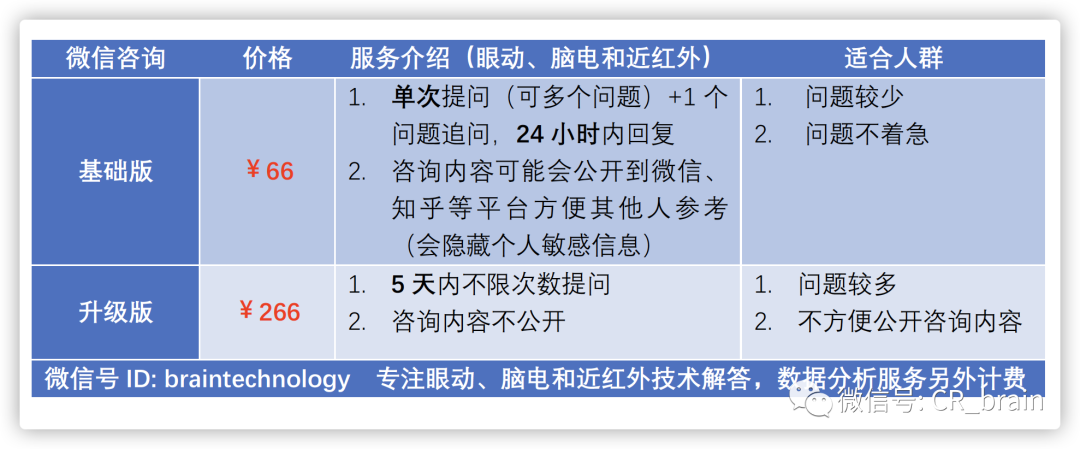顶叶及其功能

Parietal Lobe and Its Function顶叶及其功能
本文转载内容网址:https://human-memory.net/parietal-lobe/
本文仅翻译文章,可能略有错误,翻译内容仅供参考,本文遵守CC-BY-SA许可协议将译文发布在个人博客上(7988888.xyz),仅供学术参考使用,英文原文知识版权归原作者所有,此文章中所有链接均通过博客进行访问。
注:这将是一个系列的整理文章,如有感兴趣协助翻译整理的志愿者,愿意奉献自己的一点时间,促进这方面知识的发展,请联系文末的微信号ID:braintechnology
The parietal lobe is located between the central furrow and the occipital ridge. This part of the brain helps process the sense of touch and pain. Moreover, it participates in cognitive processes (1).
顶叶位于中心沟和枕脊之间。该部分帮助处理触觉和疼痛感。此外,它还参与认知过程(1)。
In this article, we will elaborate on the position, structure, and function of the parietal lobe. Importantly, we will mention some diseases and conditions that result from the parietal lobe damage.
在本文中,我们将详细阐述顶叶的位置、结构和功能。另外,我们还将提到由顶叶损伤引起的某些疾病和状况。
Position and anatomy of the parietal lobe
顶叶的位置和解剖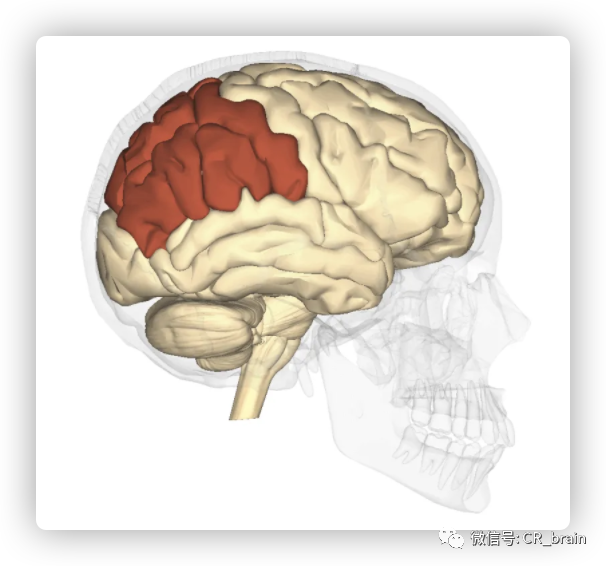
The parietal lobe is the middle part of the brain. It is located behind the central furrow towards the back. It is separated by incision preoccipitalis from the occipital lobe, lying completely posteriorly (1).
顶叶是大脑的中间部分,它位于背面中央犁沟的后面。
The incisura preoccipitalis cuts into the upper convexity of the brain hemispheres. As a result, the gyrus postcentralis, in which there are sensory centers, belongs to the parietal lobe. There are two curves in the lower area of the parietal lobes. Those are the anterior, gyrus supramarginalis and posterior, gyrus angularis.
枕前切口切入大脑半球的上凸部。因此,感觉中枢的中央后回属于顶叶。顶叶下部有两条曲线。它们分别是前、边缘上回和后、角回。
As already said, the parietal lobe occupies the upper side of the hemisphere. The parietal lobe limits from the anterior and lateral sides include the area from the front to the central sulcus, from the temporal floor to the lateral sulcus, from the occipital sulcus to the imaginary line that flows from the upper edge of the parietal occipital sulcus to the lower hemisphere edge.
如前所述,顶叶位于大脑半球的上半部。从前侧和外侧的顶叶界限包括从前面到中央沟、从颞底到外侧沟、从枕骨沟到从顶枕沟上缘到下半球边缘的假想线。
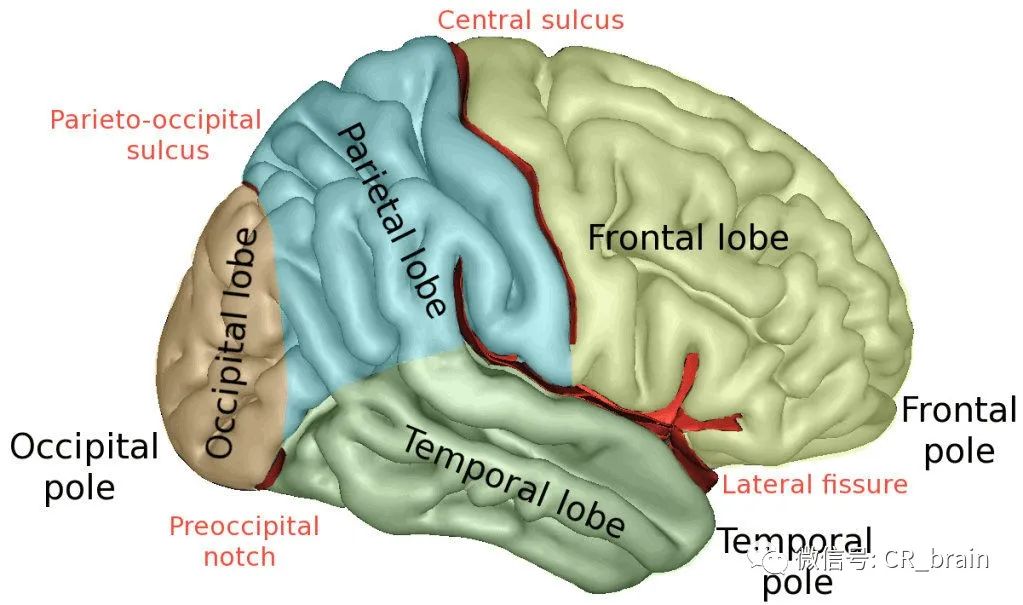
The parietal lobe, like the frontal lobe, forms a significant part of the cerebral hemisphere. In the phylogenetic relationship, it distinguishes the old part - posterior central gyrus, the new part – the upper dark gyrus, and the newest - lower dark gyrus.
顶叶和额叶一样,构成了大脑半球的重要部分。在系统发育关系中,它区分了旧部分—中央后回、新的部分—上暗回和新的下暗回。
Functions of the parietal lobe
顶叶的功能
The parietal lobe is the center of the somatic senses. Most importantly, this part of the brain plays a significant role in identifying objects around us. Namely, it helps us understand spatial relationships, and correctly analyze and compare the position of one body concerning another or the observer himself. This lobe is also important for pain and touch interpretation.
顶叶是躯体感觉的中心。该部分在识别我们周围的物体方面扮演着重要的角色。它帮助我们理解空间关系,正确地分析和比较一个物体对另一个物体或观察者自己的位置。同时,该部分对于疼痛和触觉的解释也很重要。

Moreover, the parietal lobe is significant for interpreting words, as well as language understanding and processing (1). It helps interpret and realize temperature, vision, sensory, hearing, memory, and motor center signals, as well as visual perception.
顶叶对于词汇理解和语言理解加工具有重要意义。它帮助解释和实现温度、视觉、感觉、听觉、记忆和运动中枢信号以及视知觉。
Now, we will elaborate on anatomical parts of the parietal lobe about their specific functions. First of all, the postcentral gyrus of the parietal lobe (the primary somatosensory region) processes somatic sensory stimuli that serve to recognize the shape, composition, and weight of an object.
我们将详细阐述顶叶的解剖学部分。首先,顶叶中央后回(初级躯体感觉区)处理躯体感觉刺激,这种刺激有助于识别物体的形状、组成和重量。
The spatial organization center also applies to the primary somatosensory cortex located in the anterior portions of the parietal lobe. The somatosensory functions of one side of the body are controlled by the contralateral hemisphere of the brain.
空间组织中心位于顶叶前部的初级躯体感觉皮层。身体一侧的躯体感觉功能由大脑的对侧半球控制。
The posterolateral areas of the parietal lobe are responsible for creating visual and spatial information, that is, for trajectory information of moving objects. These areas are also responsible for proprioception (awareness of the position of body parts in space).
顶叶的后外侧区域负责产生视觉和空间信息,即运动物体的轨迹信息。这些区域也负责本体感觉(意识身体部位在空间中的位置)。
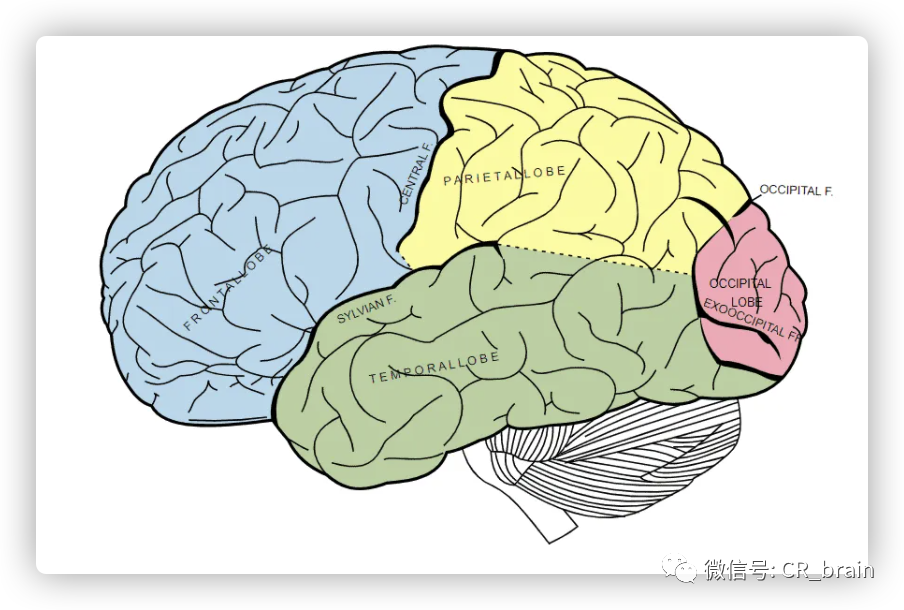
In the dominant hemisphere, the Gerstmann area located in the central part of the parietal lobe is responsible for the ability to compute, write, properly perceive space, especially the left-to-right orientation, and for finger recognition.
在优势半球中,位于顶叶中央的Gerstmann区域负责计算,书写,正确感知空间,尤其是从左到右的方向,以及手指识别的能力。
The nearby angular gyrus is responsible for naming things and other aspects of word recognition. The non-dominant parietal lobe participates in the integration of the contralateral side of the body into space and is responsible for navigating in the space.Finally, it plays an important role in different abilities such as drawing.
附近的角回负责命名事物以及单词识别的其它方面。非优势顶叶参与身体对侧的整合进入空间,并负责在空间导航。最后,它在绘画等不同能力中起着重要作用。
Furthermore, the posterior central gyrus houses the centers of sensitivity are projected with a projection of the body similar to that of the anterior central gyrus. A human face is projected in the lower third of the gyrus. The middle third segment projects a hand, while the foot is projected in the upper third part.
In the upper parietal gyrus, there are centers in charge of complex types of deep sensitivity: musculoskeletal, two-dimensional spatial sensation, sense of weight and volume of movement, sense of object recognition to the touch. The posterior to upper portions of the posterior central gyrus contain localized centers, providing the ability to identify one's body, its parts, their proportions, and their relative position.
在顶上回,有一些中枢负责复杂类型的深度敏感: 肌肉骨骼、二维空间感觉、重量感和运动量感、对触觉的物体识别感。后中央回的后至上部分包含局部中枢,提供辨认身体、部位、比例和相对位置的能力。
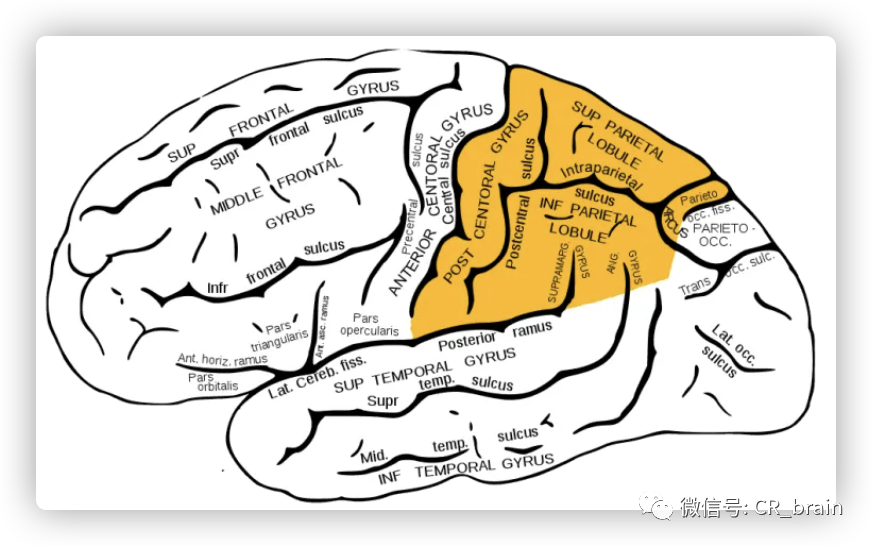
The most important sensory area is the parietal cortex segment of the postcentral gyrus. In addition, its corresponding part of the paracentral lobe plays a very important sensory role. These zones are called somatosensory region I.
最重要的感觉区域是中央后回的顶叶皮层部分。此外,其对应的旁中心叶部分起着非常重要的感觉作用。这些区域被称为躯体感觉区I。
There is a projection of skin sensitivity of the opposite side of the body from tactile, pain, temperature receptors, intereceptors of sensitivity, and systemic-skeletal sensitivity - from muscle receptors, joints, and tendons.
从触觉,疼痛,温度感受器,敏感性间的感受器和全身骨骼敏感性-从肌肉感受器,关节和肌腱出发,可以预测到身体另一侧的皮肤敏感性。
In addition to the somatosensory region I, there is a smaller size region called the somatosensory area II, located at the intersection of the central sulcus with the upper edge of the temporal lobe, at the depth of the lateral sulcus. The degree of localization of body parts is less pronounced.
除了躯体感觉区I之外,还有一个较小的区域称为躯体感觉区 II,位于中央沟与颞叶上缘的交叉处,在外侧沟的深处。身体部位的定位程度不太明显。
Diseases and damage to the parietal brain lobe
大脑顶叶的疾病和损伤
Damage to the anterior portion of the parietal lobe may cause problems with the recognition of objects via the sense of touch. This condition is called asterognosis.
顶叶前部的损伤可能会导致通过触觉识别物体的问题。这种情况被称为星状体病。
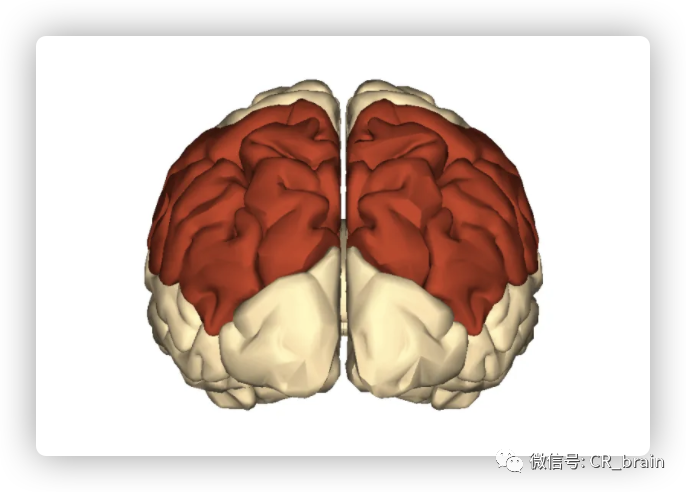
Lesions located laterally may cause interference with naming and other linguistic functions, as well as interference with writing, numeracy, left-to-right orientation, and finger naming. This condition is especially interesting from the medical point of view.
位于侧面的病变可能会干扰命名和其他语言功能,以及干扰书写、算术、左向右方向和手指命名。从医学的角度来看,这种情况特别有趣。
It is called the Gerstmann's syndrome. It implies a disturbance or inability to distinguish the left and right sides of the body and space. Failure to recognize fingers, impaired computing, writing, and reading are also symptoms of this syndrome.
它被称为格斯特曼综合症。这意味着无法区分身体和空间的左侧和右侧。无法识别手指,计算,写作和阅读受损也是该综合征的症状。
Causes of this syndrome in adults include impaired blood flow to this region. In other words, it results from the cerebrovascular disease. It can be a consequence of a stroke. Also, other types of brain damage can cause the Gerstmann’s syndrome. Moreover, a brain tumor in the parietal region can result in the occurrence of certain symptoms that are related to the Gerstmann syndrome.
成年人这种综合症的原因包括该区域的血液流动受损。换句话说,它是由脑血管疾病引起的,这可能是中风的后果。同样,其它类型的脑损伤也会导致格斯曼综合症。此外,顶叶区域的脑肿瘤可能导致与 Gerstmann 综合征相关的某些症状的发生。
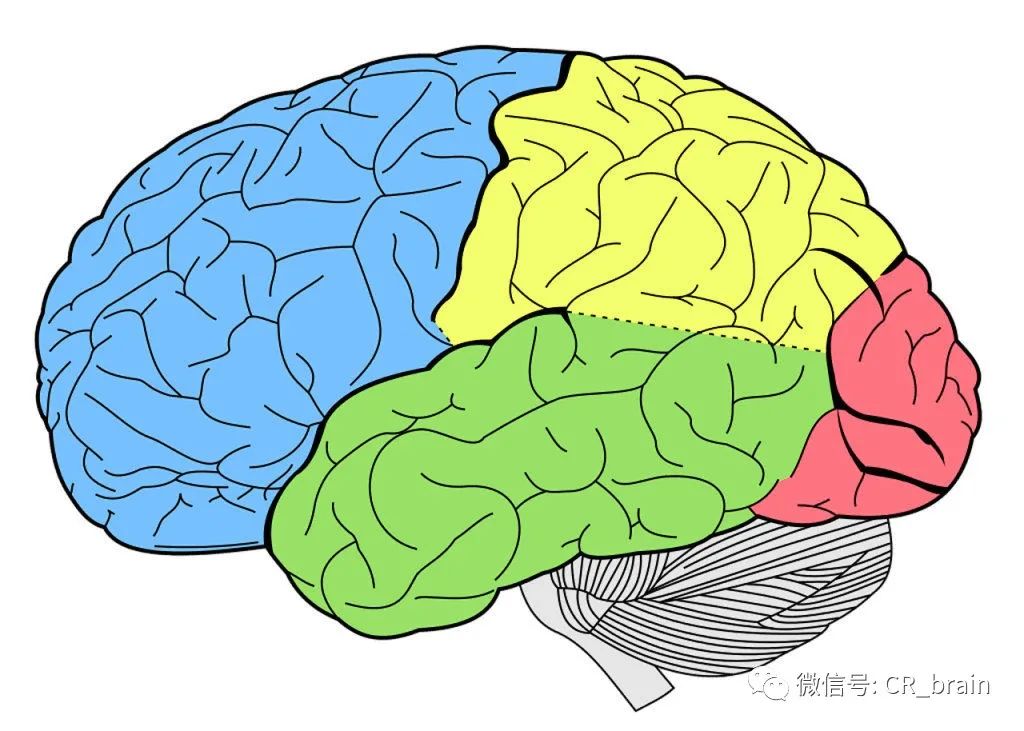
When it comes to the occurrence of the Gerstmann syndrome in children, scientists do not have a certain conclusion. Possible causes include brain damage, even though there are patients who suffer from this syndrome and do not have brain damage.
当涉及儿童Gerstmann综合征的发生时,科学家尚无定论。可能的原因包括脑部损伤,即使有些患者患有这种综合征并且没有脑部损伤。
Moreover, acute damage to the non-dominant parietal lobe can cause the contralateral side (usually left) to be neglected, leading to a diminished awareness of that part of the body, the environment around it, and injury to it.
此外,对非优势顶叶的急性损害可导致对侧(通常为左侧)被忽略,从而导致对身体的该部位,周围环境及其伤害的意识减弱。
For example, patients with severe damage to the right parietal lobe may negate left paresis and may be acutely disturbed. Patients with minor impairments may become impaired when performing motor tasks (eg, dressing or other daily activities) —a space-motor deficit called apraxia.
例如,右顶叶严重损伤的患者可能会抵消左侧轻瘫,并可能出现急性紊乱。轻度损伤的病人在执行运动任务(如穿衣或其他日常活动)时可能受损一种称为失用的空间运动缺陷。
The Parietal Lobe Syndrome
顶叶综合症
Parietal lobe syndrome implies an outbreak of function of this lobe due to damage to its structures. This lobe is located between the frontal lobes in both cerebral hemispheres. The parietal lobe extends from the central sulcus to the parieto-occipital groove separating it from the occipital lobe. It contains the primary somatosensory cortex.
顶叶综合征提示该脑叶由于结构损伤而发生功能性疾病。该脑叶位于两个大脑半球的额叶之间。顶叶从中央沟延伸至顶枕沟,将顶叶与枕叶分开。它包含初级躯体感觉皮层。
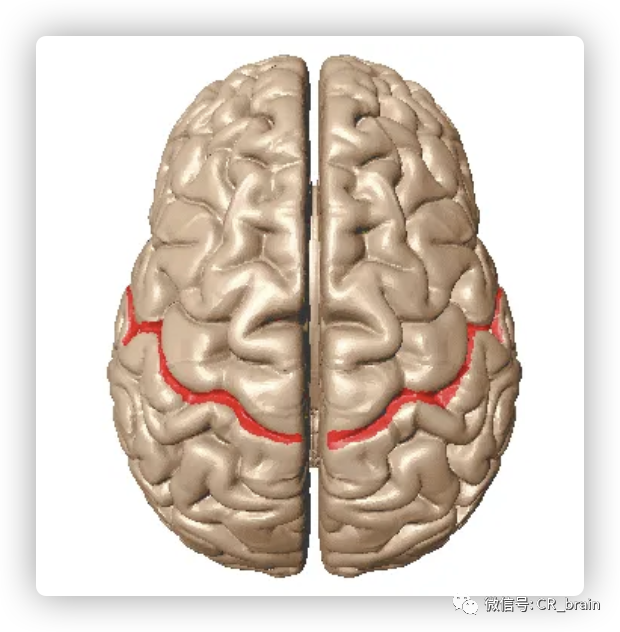
In the parietal lobe of the dominant hemisphere, the supramarginal and angular gyruses form part of the Wernike Speech Center. The fasciculus archuatus fibers connect the Broca’s and Wernike's speech centers by passing through this lobe.
在优势半球的顶叶中,上三角和角回构成了韦尼克(Wernike)语言中枢的一部分。弓状束纤维通过该叶连接布罗卡和韦尔尼克的语言中枢。
The parietal lobe of the dominant hemisphere is responsible for the ability to calculate (2), as well as the left-to-right orientation. In this lobe, body schemes are found.
优势半球的顶叶负责计算能力(2) ,以及从左到右的方向。
In the depth of the parietal lobe of both hemispheres are found fibers of optical radiation. Disorders of the parietal lobe function can result from trauma, tumors, infection, vascular events, etc. Damage caused by trauma or by another etiological factor can impair the function of the frontal lobe as well as cause frontal lobe syndrome.
在两个大脑半球的顶叶深处都发现了光辐射纤维。顶叶功能紊乱可能是由外伤,肿瘤,感染,血管事件等引起的。外伤或其它病因引起的损伤可能损害额叶功能并引起额叶综合征。
Parietal lobe syndrome primarily involves the appearance of contralateral hyposthesia. The sense of touch, pain, temperature, vibration, and proprioception are reduced even though the Edinger's path and the system of medial leminiscus are usually preserved.
顶叶综合征主要表现为对侧感觉减退。触觉、疼痛、温度、振动和本体感觉减弱,尽管通常保留了 Edinger 的路径和内侧半月板系统。
Damage to the posterior parts of the parietal lobe causes a disruption of the perception of the position of the body parts in the joints (proprioception is impaired).
顶叶后部的损伤导致关节对身体各部位位置的感知中断(本体感觉受损)。
It also disrupts the ability to localize light or gentle touch accurately. The patient is unable to recognize objects by touch, which is called asterognosis. Such patients also have a disorder called agraphesthesia. Agraphesthesia is an inability to recognize the shapes or letters that are drawn on the patient's skin (circle, triangle, square).
它破坏了准确定位光线或轻柔触摸的能力。患者无法通过触摸来辨认物体,这被称为星体症。这些患者也患有称为感觉失调的疾病。Agraphesthesia 是指无法识别患者皮肤上绘制的形状或字母(圆形,三角形,正方形)
When it comes to parietal lobe syndrome, the phenomenon of sensory inattention is also present. When the patient is touching both hands at the same time, he is not aware of the touch on one of them because he does not feel it (3).
当涉及顶叶综合征时,也会出现感觉注意力不集中的现象。
Conclusion
总结
The parietal lobe occupies the upper side of the hemisphere. The function of the parietal lobe is related to the perception and analysis of sensitive stimuli, as well as spatial orientation. Several functional centers are concentrated in the parietal lobe convolutions.
顶叶位于大脑半球的上半部。顶叶的功能与对敏感刺激的感知和分析以及空间方向有关,多个功能中枢集中在顶叶回。
Damage, tumor, or stroke that affects the parietal lobe can lead to significant impairments and dysfunctions. Those include the Parietal lobe syndrome and the Gerstmann syndrome.
顶叶的损伤可能是肿瘤或中风可导致严重的损伤和功能障碍,其中包括顶叶综合征和格斯特曼综合征。
References
Brownsett SL, Wise RJ. The contribution of the parietal lobes to speaking and writing. Cereb Cortex. 2010 Mar;20(3):517-23. doi: 10.1093/cercor/bhp120. Epub 2009 Jun 16. PMID: 19531538; PMCID: PMC2820696. Found online at: https://www.ncbi.nlm.nih.gov/pmc/articles/PMC2820696/
Cappelletti M, Lee HL, Freeman ED, Price CJ. The role of right and left parietal lobes in the conceptual processing of numbers. J CognNeurosci. 2010 Feb;22(2):331-46. doi: 10.1162/jocn.2009.21246. PMID: 19400672; PMCID: PMC2808313. Found online at: https://www.ncbi.nlm.nih.gov/pmc/articles/PMC2808313/
Caminiti R, Chafee MV, Battaglia-Mayer A, Averbeck BB, Crowe DA, Georgopoulos AP. Understanding the parietal lobe syndrome from a neurophysiological and evolutionary perspective. Eur J Neurosci. 2010 Jun;31(12):2320-40. doi: 10.1111/j.1460-9568.2010.07291.x.Epub 2010 Jun 9. PMID: 20550568; PMCID: PMC2900452. Found online at: https://www.ncbi.nlm.nih.gov/pmc/articles/PMC2900452/

谢谢大家观看,如有帮助,来个关注或者转发吧!
本文作者:human-memory
翻译作者:陈锐
博客地址 : 陈锐博客
知乎地址 : 知乎专栏
B站地址 : B站主页
书店地址 : 书店主页
简书地址 : 简书主页
CSDN地址 : csdn主页
仅供学习使用,不作其它用途,如有侵权,请留言联系,作删除处理!
付费咨询微信号:
